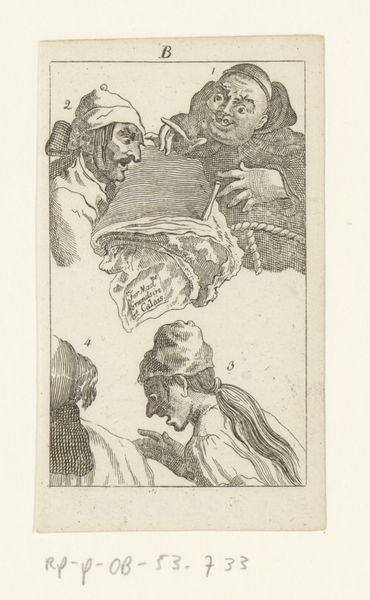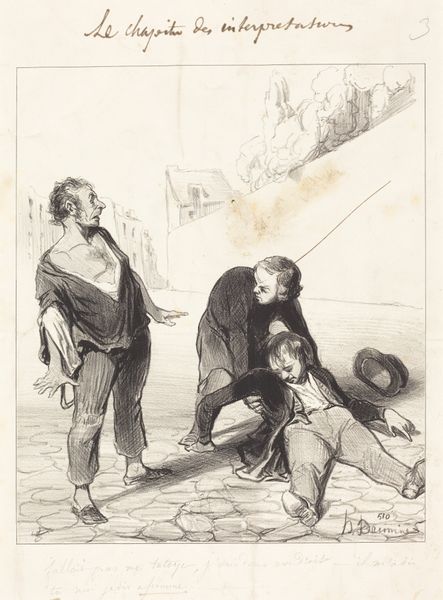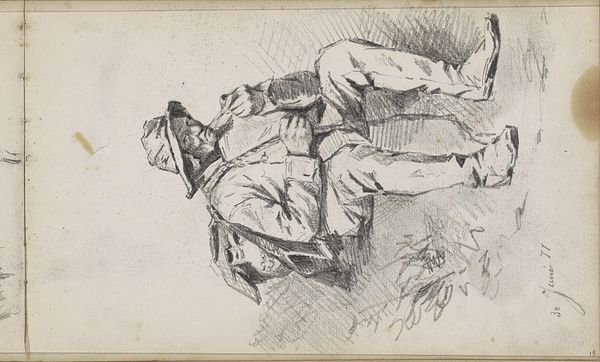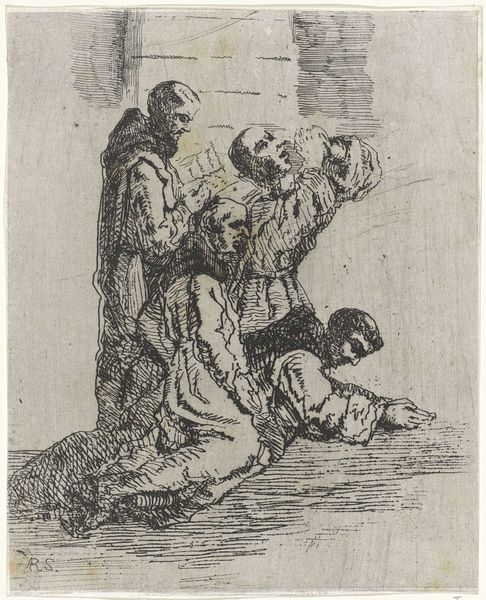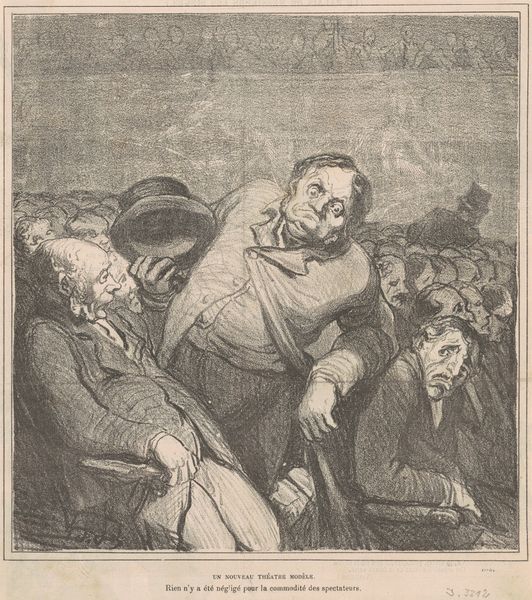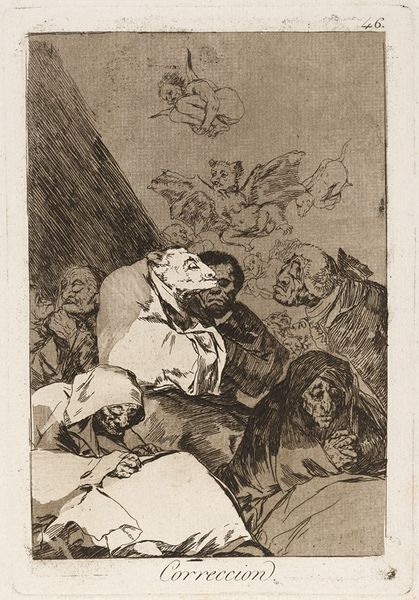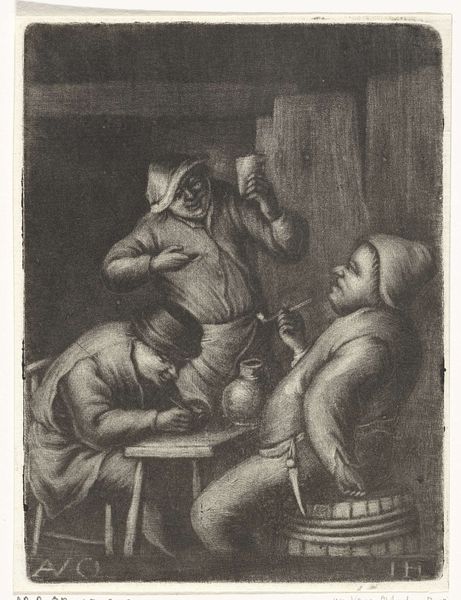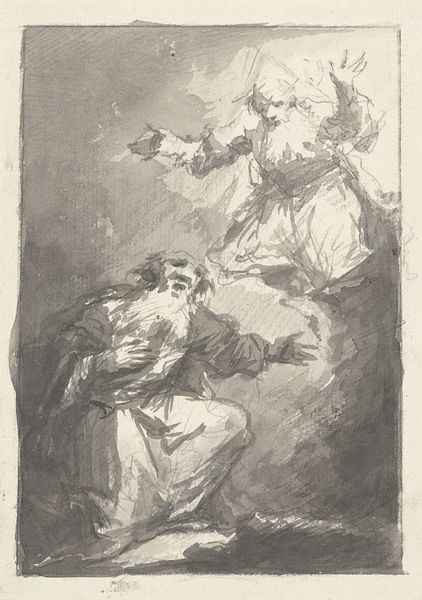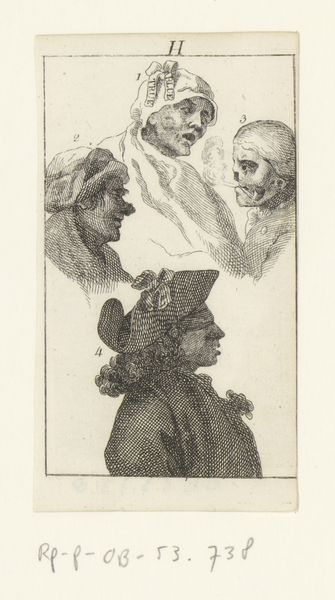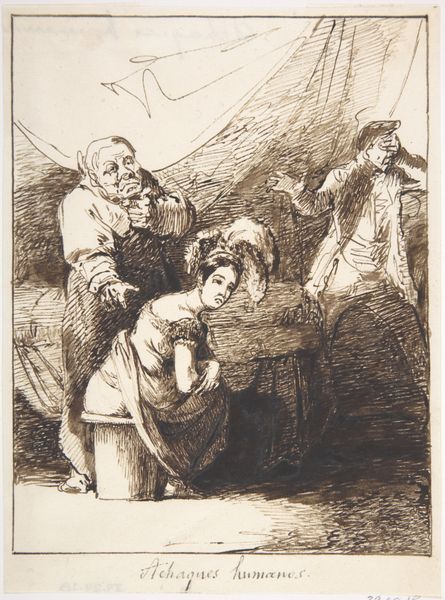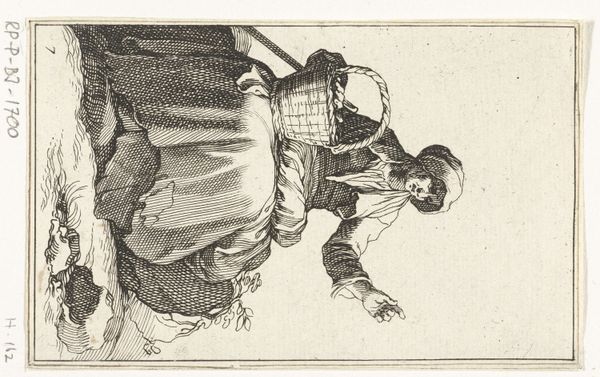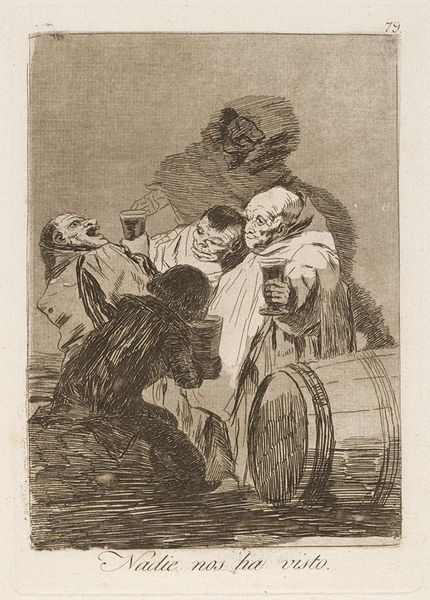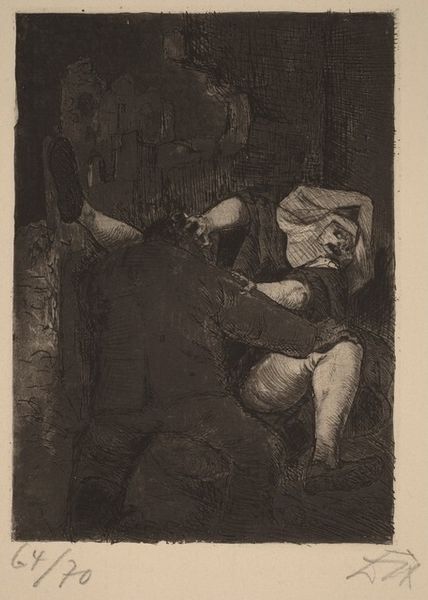
drawing, print, intaglio
#
portrait
#
drawing
# print
#
pen illustration
#
intaglio
#
pencil sketch
#
figuration
#
pen-ink sketch
#
watercolour illustration
Dimensions: height 158 mm, width 122 mm
Copyright: Rijks Museum: Open Domain
Curator: Looking at this piece, the figures seem shrouded in a contemplative silence. There’s a vulnerability conveyed through their postures and obscured faces. Editor: We're observing "Three Figure Studies of Woman and Man," attributed to Albertus Brondgeest, and believed to have been created sometime between 1796 and 1849. This piece from the Rijksmuseum employs both intaglio and drawing techniques. It's a layered artwork with intriguing material considerations. Curator: Intaglio allows for such fine detail. I am drawn to the textures, specifically the density of line work. The ways Brondgeest builds tone speaks volumes about available printmaking technologies during that period. What social functions might a print like this serve? Editor: Prints made art accessible beyond the wealthy elite, distributing imagery widely. The art market was rapidly shifting. Consider too, the artist's role during the rise of public museums; these kinds of figure studies also facilitated academic training, teaching composition, anatomy, light, shadow— all part of professionalizing artistic labor. Curator: Yes, but there is a stark humanness here as well! It feels almost raw because of these delicate renderings. Do you think these figures might have served a preliminary purpose for something more polished, a different kind of production? Editor: Possibly sketches for larger compositions. Brondgeest and his peers shaped, and were shaped by, public taste. Remember prints could reproduce history paintings, popular theatrical moments—art reflecting society but also instructing its viewers in morality and manners. This could represent that cultural feedback loop, too. Curator: I can definitely see the echoes of larger historical themes reverberating within such contained studies, too. All right! These figure studies open avenues into both art making practices and social mores of their age, if one only stops to look and listen carefully. Editor: Indeed. By thinking through both method and milieu we come to a better appreciation for this unassuming print in the Rijksmuseum's collection.
Comments
No comments
Be the first to comment and join the conversation on the ultimate creative platform.
